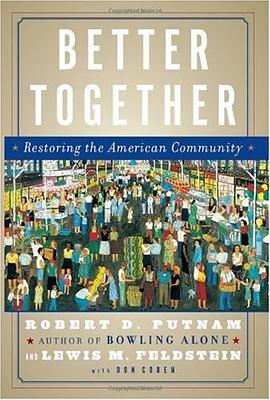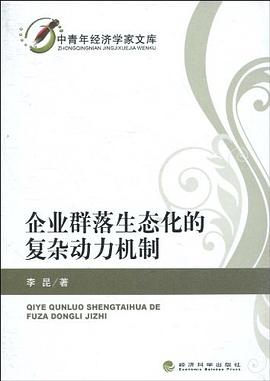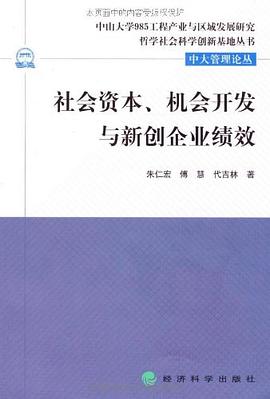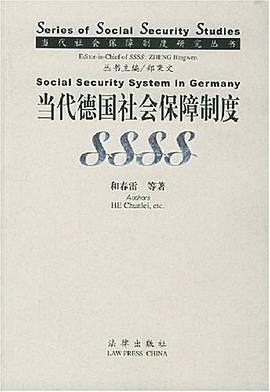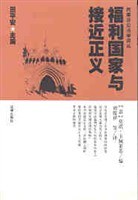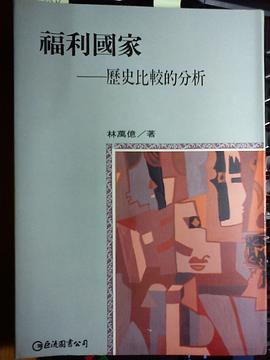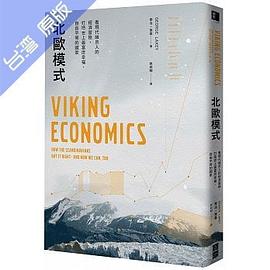

具體描述
Entrepreneurship is hot. China is hot. Chinese entrepreneurs are indeed the subject of a rapidly growing body of literature, popular and academic. There are biographies of 'famous' entrepreneurs which are informative. While informative, these are usually of a non-academic nature. Academic studies tend to focus on the political and economic environment in which present day Chinese entrepreneurs have to operate. Both these types of publications shed light on the entrepreneurial identity. This study aims at filling the research gap with a core question: why do some people become entrepreneurs? The authors have analysed the life stories of a number of Chinese private entrepreneurs to reveal how the entrepreneurial identity of each of them has emerged at the cross section of a number of other identities. This book therefore contributes to a better understanding of Chinese entrepreneurship and the study of entrepreneurship in general.
著者簡介
圖書目錄
Part I Defining the Problem
1 Introduction: From Enterprise to Entrepreneur . . . . . . . . . . . . . . 3
Who on Earth is Xinmao? . . . . . . . . . . . . . . . . . . . . . . . . . . . . . . . . 3
Xinmao Supported the Chinese Government? . . . . . . . . . . . . . . . . . . 6
2 Entrepreneurship . . . . . . . . . . . . . . . . . . . . . . . . . . . . . . . . . . . . . 11
Defining Entrepreneurship . . . . . . . . . . . . . . . . . . . . . . . . . . . . . . . . 11
Schools of Thought on Entrepreneurship . . . . . . . . . . . . . . . . . . . . . 12
Economic Approach . . . . . . . . . . . . . . . . . . . . . . . . . . . . . . . . . . . . 12
Critique on Economic Approach . . . . . . . . . . . . . . . . . . . . . . . . . . . 13
Traits Approach . . . . . . . . . . . . . . . . . . . . . . . . . . . . . . . . . . . . . . . 13
Critique on the Traits Approach . . . . . . . . . . . . . . . . . . . . . . . . . . . 14
Side Step: Mr. Du Kerong . . . . . . . . . . . . . . . . . . . . . . . . . . . . . . . . 17
Social Identity Approach . . . . . . . . . . . . . . . . . . . . . . . . . . . . . . . . . 18
Discovery of Opportunities . . . . . . . . . . . . . . . . . . . . . . . . . . . . . . . 20
Securing Resources . . . . . . . . . . . . . . . . . . . . . . . . . . . . . . . . . . . . 20
Obtaining Legitimacy . . . . . . . . . . . . . . . . . . . . . . . . . . . . . . . . . . . 20
Social Integration Theory . . . . . . . . . . . . . . . . . . . . . . . . . . . . . . . . 21
Social Integration and Networks . . . . . . . . . . . . . . . . . . . . . . . . . . . 26
Life Story Analysis: A Historic Approach . . . . . . . . . . . . . . . . . . . . 29
Narrative Analysis . . . . . . . . . . . . . . . . . . . . . . . . . . . . . . . . . . . . . 31
Naturalistic Inquiry . . . . . . . . . . . . . . . . . . . . . . . . . . . . . . . . . . . . . 33
3 Chinese Entrepreneurs in Society . . . . . . . . . . . . . . . . . . . . . . . . . 37
The Enterprise in Premodern and Modern China . . . . . . . . . . . . . . . 37
Fuel: Coal . . . . . . . . . . . . . . . . . . . . . . . . . . . . . . . . . . . . . . . . 38
Institutional Environment . . . . . . . . . . . . . . . . . . . . . . . . . . . . 38
Living Standards . . . . . . . . . . . . . . . . . . . . . . . . . . . . . . . . . . . 38
Legal Environment: Property Rights . . . . . . . . . . . . . . . . . . . . . 38
xi
The Enterprise in the PRC . . . . . . . . . . . . . . . . . . . . . . . . . . . . . . . 40
Danwei the Basic ‘Unit’ of Socialist Society . . . . . . . . . . . . . . . 40
Enterprises: The Early Typology . . . . . . . . . . . . . . . . . . . . . . . . . . . 41
Contexts of the Early Industrial Units . . . . . . . . . . . . . . . . . . . . . . . 43
The Post-reform Situation . . . . . . . . . . . . . . . . . . . . . . . . . . . . . . . . 46
State Owned Enterprises . . . . . . . . . . . . . . . . . . . . . . . . . . . . . 46
Collective Enterprises . . . . . . . . . . . . . . . . . . . . . . . . . . . . . . . 47
Private Enterprises . . . . . . . . . . . . . . . . . . . . . . . . . . . . . . . . . 48
Groups/Conglomerates . . . . . . . . . . . . . . . . . . . . . . . . . . . . . . 49
Limited Companies . . . . . . . . . . . . . . . . . . . . . . . . . . . . . . . . . 51
Foreign Invested Enterprises . . . . . . . . . . . . . . . . . . . . . . . . . . 52
Growing Influence in Society . . . . . . . . . . . . . . . . . . . . . . . . . . . . . 53
Part II Case Histories
4 Real Estate Entrepreneur Wang . . . . . . . . . . . . . . . . . . . . . . . . . . 61
Introduction . . . . . . . . . . . . . . . . . . . . . . . . . . . . . . . . . . . . . . . . . . 61
The Social Construction of Yihai Education . . . . . . . . . . . . . . . . . . . 63
Wang’s Entrepreneurship . . . . . . . . . . . . . . . . . . . . . . . . . . . . . . . . 66
Education as Core Business . . . . . . . . . . . . . . . . . . . . . . . . . . . . . . . 67
5 Textile Spin-Off Niu . . . . . . . . . . . . . . . . . . . . . . . . . . . . . . . . . . . 71
Introduction . . . . . . . . . . . . . . . . . . . . . . . . . . . . . . . . . . . . . . . . . . 71
Life Chapter 1: Employee . . . . . . . . . . . . . . . . . . . . . . . . . . . . 71
Chapter 2: On His Own Feet . . . . . . . . . . . . . . . . . . . . . . . . . . 72
Chapter 3: From Trader to Producer . . . . . . . . . . . . . . . . . . . . . 73
Chapter 4: Decline . . . . . . . . . . . . . . . . . . . . . . . . . . . . . . . . . 74
Chapter 5: Hanging on . . . . . . . . . . . . . . . . . . . . . . . . . . . . . . . 75
6 LangLib: An Online English Study Community . . . . . . . . . . . . . . 77
Introduction . . . . . . . . . . . . . . . . . . . . . . . . . . . . . . . . . . . . . . . . . . 77
Life Chapters Du . . . . . . . . . . . . . . . . . . . . . . . . . . . . . . . . . . . . . . 78
Chapter 1: Childhood . . . . . . . . . . . . . . . . . . . . . . . . . . . . . . . 78
Chapter 2: Beijing Institute of Technology (BIT) . . . . . . . . . . . 79
Chapter 3: Tsinghua University . . . . . . . . . . . . . . . . . . . . . . . . 79
Life Story of Jin Jing . . . . . . . . . . . . . . . . . . . . . . . . . . . . . . . . . . . 80
Chapter 1: Beijing Jiaotong University (BJTU) . . . . . . . . . . . . . 80
Chapter 2: Beijing Join-Cheer Software Co., Ltd. (JC) . . . . . . . 80
Chapter 3: LangLib . . . . . . . . . . . . . . . . . . . . . . . . . . . . . . . . . 82
7 Home Renovator Cheng . . . . . . . . . . . . . . . . . . . . . . . . . . . . . . . . 83
Introduction . . . . . . . . . . . . . . . . . . . . . . . . . . . . . . . . . . . . . . . . . . 83
Life Chapters . . . . . . . . . . . . . . . . . . . . . . . . . . . . . . . . . . . . . . . . . 83
Chapter 1: Starting from an Apprenticeship . . . . . . . . . . . . . . . 83
Chapter 2: A “Free” Agent, a Genuine Guerrilla Worker
in the Renovation Market . . . . . . . . . . . . . . . . . . . . . . . . . . . . 85
xii Contents
Chapter 3: Small Company Owner . . . . . . . . . . . . . . . . . . . . . . 86
Chapter 4: Higher-Grade Construction Company Owner . . . . . . 87
Conclusions . . . . . . . . . . . . . . . . . . . . . . . . . . . . . . . . . . . . . . . . . . 89
8 Migrant Tailor Yuan . . . . . . . . . . . . . . . . . . . . . . . . . . . . . . . . . . 91
Introduction . . . . . . . . . . . . . . . . . . . . . . . . . . . . . . . . . . . . . . . . . . 91
Life Story . . . . . . . . . . . . . . . . . . . . . . . . . . . . . . . . . . . . . . . . . . . 91
Chapter 1: (Before 1984): Days in His Hometown . . . . . . . . . . 91
Chapter 2: (1984–2000): Early Development in Beijing . . . . . . . 92
Chapter 3: (After 2000): The Consolidation and Further
Development in Beijing . . . . . . . . . . . . . . . . . . . . . . . . . . . . . . 93
Theoretical Analysis . . . . . . . . . . . . . . . . . . . . . . . . . . . . . . . . . . . . 93
Before the Year of 1985 . . . . . . . . . . . . . . . . . . . . . . . . . . . . . 94
1985–1995 . . . . . . . . . . . . . . . . . . . . . . . . . . . . . . . . . . . . . . . 94
1996–2011 . . . . . . . . . . . . . . . . . . . . . . . . . . . . . . . . . . . . . . . 95
Summary and Reflection . . . . . . . . . . . . . . . . . . . . . . . . . . . . . . . . . 95
9 Restaurant Entrepreneur Mr. B . . . . . . . . . . . . . . . . . . . . . . . . . . 97
Introduction . . . . . . . . . . . . . . . . . . . . . . . . . . . . . . . . . . . . . . . . . . 97
Life Chapters . . . . . . . . . . . . . . . . . . . . . . . . . . . . . . . . . . . . . . . . . 98
Chapter 1: In the Village . . . . . . . . . . . . . . . . . . . . . . . . . . . . . 98
Chapter 2: An Outstanding Apprentice and Employee . . . . . . . . 98
Chapter 3: Debut on the Business World . . . . . . . . . . . . . . . . . 99
Chapter 4: More on His Own . . . . . . . . . . . . . . . . . . . . . . . . . . 100
Conclusions . . . . . . . . . . . . . . . . . . . . . . . . . . . . . . . . . . . . . . . . . . 101
10 Less Successful Entrepreneur Meng . . . . . . . . . . . . . . . . . . . . . . . 103
Introduction . . . . . . . . . . . . . . . . . . . . . . . . . . . . . . . . . . . . . . . . . . 103
Life Chapters . . . . . . . . . . . . . . . . . . . . . . . . . . . . . . . . . . . . . . . . . 103
Chapter 1: 1983–2001 . . . . . . . . . . . . . . . . . . . . . . . . . . . . . . . 103
Chapter 2: 2001–2003 . . . . . . . . . . . . . . . . . . . . . . . . . . . . . . . 104
Chapter 3: 2003–2005 . . . . . . . . . . . . . . . . . . . . . . . . . . . . . . . 104
Chapter 4: 2005–2006 . . . . . . . . . . . . . . . . . . . . . . . . . . . . . . . 105
Chapter 5: 2007–2010 . . . . . . . . . . . . . . . . . . . . . . . . . . . . . . . 105
Chapter 6: 2011–Now . . . . . . . . . . . . . . . . . . . . . . . . . . . . . . . 105
Conclusion . . . . . . . . . . . . . . . . . . . . . . . . . . . . . . . . . . . . . . . . . . . 106
Part III Elements of Entrepreneurial Identity
11 Family . . . . . . . . . . . . . . . . . . . . . . . . . . . . . . . . . . . . . . . . . . . . . 111
Core of Society . . . . . . . . . . . . . . . . . . . . . . . . . . . . . . . . . . . . . . . 111
Family as Basic Unit of the Economy . . . . . . . . . . . . . . . . . . . . . . . 112
Family ¼ Region . . . . . . . . . . . . . . . . . . . . . . . . . . . . . . . . . . . . . . 113
Family Ties as Social Relations . . . . . . . . . . . . . . . . . . . . . . . . . . . . 113
Family as Incentive for Entrepreneurship . . . . . . . . . . . . . . . . . . . . . 114
Family as Stepping Stone . . . . . . . . . . . . . . . . . . . . . . . . . . . . . . . . 115
Contents xiii
Family as Burden . . . . . . . . . . . . . . . . . . . . . . . . . . . . . . . . . . . . . . 115
Family as Impediment . . . . . . . . . . . . . . . . . . . . . . . . . . . . . . . . . . 116
Family as Narrative . . . . . . . . . . . . . . . . . . . . . . . . . . . . . . . . . . . . 117
12 Home Region . . . . . . . . . . . . . . . . . . . . . . . . . . . . . . . . . . . . . . . . 125
Hearing the Neighbor’s Dog . . . . . . . . . . . . . . . . . . . . . . . . . . . . . . 125
Regional Embassies . . . . . . . . . . . . . . . . . . . . . . . . . . . . . . . . . . . . 126
From Rural to Subaltern . . . . . . . . . . . . . . . . . . . . . . . . . . . . . . . . . 128
Zhejiang Village . . . in Beijing . . . . . . . . . . . . . . . . . . . . . . . . . . . . 130
Virtual Villages . . . . . . . . . . . . . . . . . . . . . . . . . . . . . . . . . . . . . . . 131
Home Region as Inspiration . . . . . . . . . . . . . . . . . . . . . . . . . . . . . . 132
Home Town Influences . . . . . . . . . . . . . . . . . . . . . . . . . . . . . . . . . . 133
13 Friends . . . . . . . . . . . . . . . . . . . . . . . . . . . . . . . . . . . . . . . . . . . . . 137
Chinese Friendship . . . . . . . . . . . . . . . . . . . . . . . . . . . . . . . . . . . . . 139
Friends of the Case Entrepreneurs . . . . . . . . . . . . . . . . . . . . . . . . . . 141
An Army of Friends: Back Again to Mr. Du Kerong . . . . . . . . . . . . 141
Entrepreneur Without Friends (?) . . . . . . . . . . . . . . . . . . . . . . . . . . 142
14 Government . . . . . . . . . . . . . . . . . . . . . . . . . . . . . . . . . . . . . . . . . 145
Multiple Economies . . . . . . . . . . . . . . . . . . . . . . . . . . . . . . . . . . . . 145
Province . . . . . . . . . . . . . . . . . . . . . . . . . . . . . . . . . . . . . . . . . . . . 146
Municipality . . . . . . . . . . . . . . . . . . . . . . . . . . . . . . . . . . . . . . . . . . 148
Municipal District . . . . . . . . . . . . . . . . . . . . . . . . . . . . . . . . . . . . . 149
Neighborhood . . . . . . . . . . . . . . . . . . . . . . . . . . . . . . . . . . . . . . . . 149
Community: The Youngest Child . . . . . . . . . . . . . . . . . . . . . . . . . . 150
Matrix Between Administrative Levels and Industries . . . . . . . . . . . 150
Chinese Enterprises and Government Agencies . . . . . . . . . . . . . . . . 151
Law Enforcement: Seeking Peaceful Coexistence . . . . . . . . . . . . . . . 152
Changing Policies: Going Along or Against . . . . . . . . . . . . . . . . . . . 153
Conclusions and Beyond . . . . . . . . . . . . . . . . . . . . . . . . . . . . . . . . . . . 155
Author Biographies . . . . . . . . . . . . . . . . . . . . . . . . . . . . . . . . . . . . . . . 161
References . . . . . . . . . . . . . . . . . . . . . . . . . . . . . . . . . . . . . . . . . . . . . . 163
Index . . . . . . . . . . . . . . . . . . . . . . . . . . . . . . . . . . . . . . . . . . . . . . . . . . 169
xiv Contents
· · · · · · (收起)
讀後感
評分
評分
評分
評分
用戶評價
It applies a new method of social network analysis to unravel the social embeddedness of Chinese entrepreneurs. It can be used as a secondary reading matter in Master level courses in the fields of: business studies, sociology, economy, and even political science.
评分It applies a new method of social network analysis to unravel the social embeddedness of Chinese entrepreneurs. It can be used as a secondary reading matter in Master level courses in the fields of: business studies, sociology, economy, and even political science.
评分It applies a new method of social network analysis to unravel the social embeddedness of Chinese entrepreneurs. It can be used as a secondary reading matter in Master level courses in the fields of: business studies, sociology, economy, and even political science.
评分It applies a new method of social network analysis to unravel the social embeddedness of Chinese entrepreneurs. It can be used as a secondary reading matter in Master level courses in the fields of: business studies, sociology, economy, and even political science.
评分It applies a new method of social network analysis to unravel the social embeddedness of Chinese entrepreneurs. It can be used as a secondary reading matter in Master level courses in the fields of: business studies, sociology, economy, and even political science.
相關圖書
本站所有內容均為互聯網搜索引擎提供的公開搜索信息,本站不存儲任何數據與內容,任何內容與數據均與本站無關,如有需要請聯繫相關搜索引擎包括但不限於百度,google,bing,sogou 等
© 2025 book.quotespace.org All Rights Reserved. 小美書屋 版权所有





